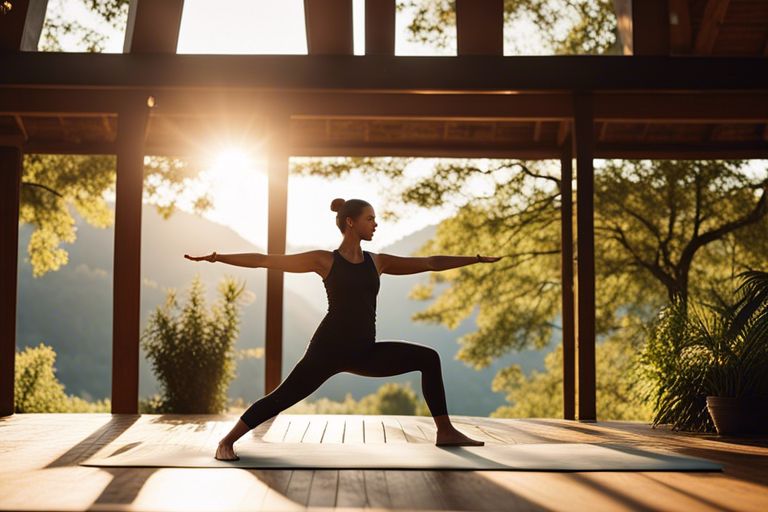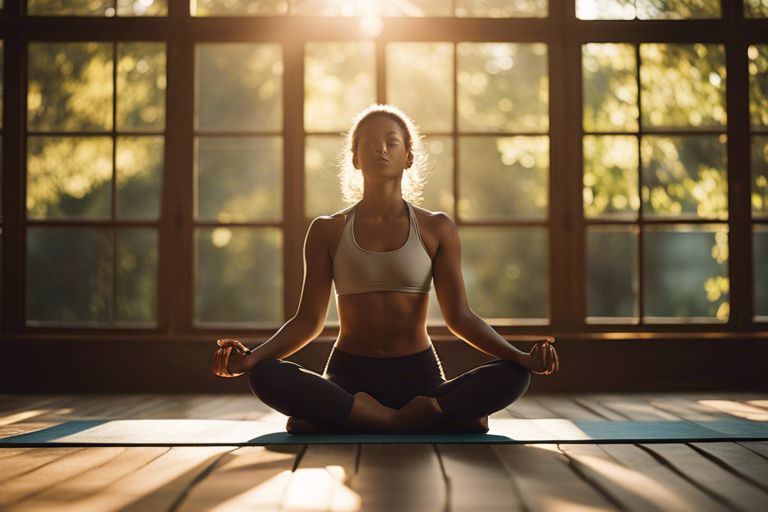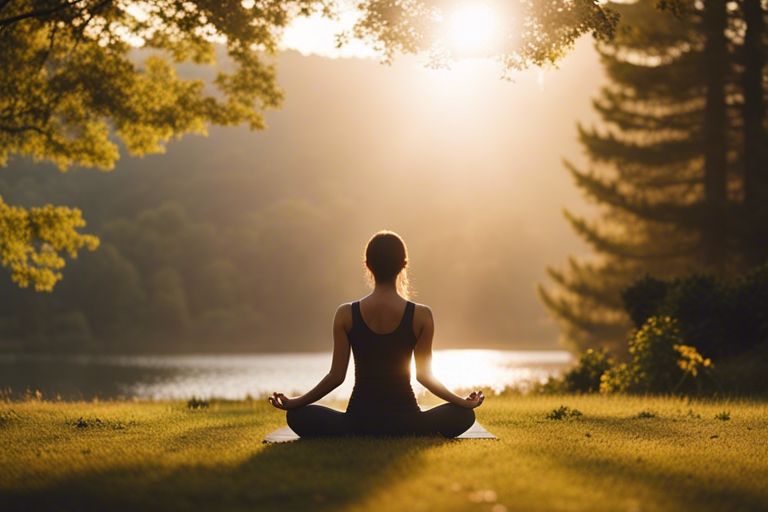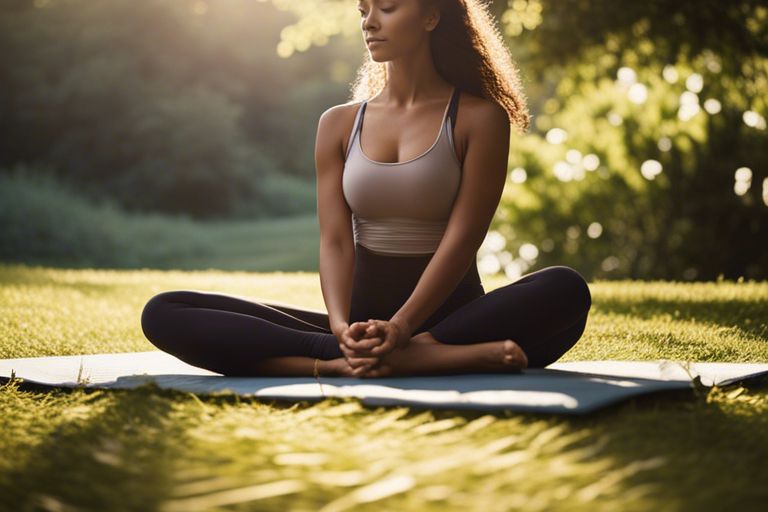With slow flow yoga, you can enhance your mindfulness practice in a gentle and restorative way. This type of yoga allows you to focus on your breath and move slowly through poses, promoting a deeper connection between your mind and body. By slowing down and being present in the moment, you can reduce stress, improve concentration, and enhance your overall well-being. Try incorporating slow flow yoga into your routine to experience these benefits for yourself.
Key Takeaways:
- Improves Mindfulness: Slow flow yoga helps increase your focus and awareness by encouraging you to move mindfully and with intention.
- Stress Reduction: The combination of gentle movements, deep breathing, and meditation in slow flow yoga can help reduce stress levels and promote relaxation.
- Enhances Mind-Body Connection: Practicing slow flow yoga allows you to connect with your body, breath, and emotions, leading to a greater sense of overall well-being.

Cultivating Mindfulness
Before The Importance of Slow-Flow Yoga in a Fast-Paced World, incorporating slow flow yoga into your routine can have numerous benefits for your mental well-being.
Reducing Stress and Anxiety
Mindfulness is key to reducing stress and anxiety in your daily life. When you engage in slow flow yoga, you are encouraged to focus on your breathing, movements, and sensations, which helps calm your mind and alleviate any tension or worries you may have been carrying throughout the day. The deliberate and gentle pace of slow flow yoga allows you to release built-up stress and let go of any anxious thoughts, promoting a greater sense of peace and relaxation.
Increasing Self-Awareness
On your journey towards mindfulness, slow flow yoga can also help you increase your self-awareness. By paying attention to how your body feels during each pose, you can connect with your physical sensations and emotions more deeply. This heightened awareness can enhance your ability to recognize any areas of tension or discomfort in your body and mind, allowing you to address them with compassion and understanding.
With regular practice of slow flow yoga, you can improve your overall well-being and cultivate a greater sense of mindfulness in your daily life. By dedicating time to focus on your breath, body, and mind, you can nurture a deeper connection to yourself and the world around you, fostering a more balanced and harmonious lifestyle.1. Slow flow yoga encourages deep breathing and mindfulness.
2. Improves flexibility and strength with gentle movements and poses.
3. Helps reduce stress and anxiety through focused movement and breath.
4. Promotes a sense of relaxation and calmness in the body.
5. Enhances mind-body connection by moving mindfully through poses.
6. Supports mental clarity and presence through deliberate movements.

Physical Benefits of Slow Flow Yoga
It’s time to discover the physical benefits of practicing Slow Flow Yoga, also known as Slow Flow Yoga: Mindful Vinyasa. This style of yoga not only helps you achieve mindfulness but also brings numerous advantages to your body.
Improving Flexibility and Balance
On your journey with Slow Flow Yoga, you will notice significant improvements in your flexibility and balance. The intentional and gradual movements in the practice encourage you to explore your range of motion and work on enhancing your balance. These aspects are crucial in maintaining overall physical well-being and preventing injuries.
Strengthening Core and Overall Health
Physical strength and core stability are vital for supporting your body in various activities. Engaging in Slow Flow Yoga regularly can help you strengthen your core muscles, which serve as the foundation for your body’s movements. For instance, as you flow through the poses mindfully, you will engage your core muscles, leading to improved posture and overall physical health.
Emotional and Mental Well-being
Many people turn to slow flow yoga as a way to enhance their emotional and mental well-being. The gentle and deliberate movements, combined with focused breathing, can have wonderful effects on your overall mood and emotional regulation.
Enhancing Mood and Emotional Regulation
One of the key benefits of slow flow yoga is its ability to help you regulate your emotions and improve your mood. The mindful nature of the practice allows you to connect with your inner self, becoming more aware of your feelings and reactions. By moving slowly and deliberately through poses, you can release pent-up emotions and stress, leading to a greater sense of calm and balance.
Fostering Compassion and Empathy
One of the beautiful aspects of slow flow yoga is its capacity to foster compassion and empathy within you. As you focus on your breath and movements, you become more attuned to your own needs and feelings. This increased self-awareness naturally extends to others, allowing you to approach interactions with kindness and understanding. You may find yourself more compassionate towards yourself and others, leading to improved relationships and a greater sense of connection.
Wellbeing: Cultivating compassion and empathy through slow flow yoga can have a profound impact on your overall wellbeing. By fostering these qualities, you create a more harmonious relationship with yourself and those around you.
Mental: Slow flow yoga can be a powerful tool for improving your mental well-being. The practice encourages you to focus on the present moment, quieting the mind and reducing stress and anxiety. By incorporating slow flow yoga into your routine, you can strengthen your mental resilience and cultivate a more positive outlook on life.

Integrating Slow Flow Yoga into Daily Life
Keep your practice consistent by creating a home practice routine that suits your lifestyle.
Creating a Home Practice Routine
Set aside a specific time each day to dedicate to your practice. Whether it’s in the morning to start your day on a calm note or in the evening to unwind, find a time that works best for you. Designate a space in your home where you can roll out your mat and focus on your practice without distractions. You can follow a video tutorial, create your sequences, or simply flow intuitively.
On your journey to mindfulness, you might find it beneficial to connect with a yoga community for support.
Finding a Yoga Community for Support
Joining a local yoga studio or online community can provide you with a sense of belonging and motivation. You can attend classes, workshops, or events to deepen your practice and meet like-minded individuals. This community can offer you guidance, encouragement, and a safe space to explore your yoga journey.
Finding a yoga community for support can broaden your understanding of yoga philosophy, help you stay accountable to your practice, and inspire you to progress in your mindfulness journey alongside others. Whether you’re a beginner or an experienced yogi, having a supportive community can enrich your practice and enhance your overall well-being.
Summing up
Taking this into account, slow flow yoga can be a wonderful practice to incorporate into your routine for cultivating mindfulness. By moving slowly and mindfully through each pose, you can deepen your mind-body connection, increase your awareness of the present moment, and find a sense of inner peace. This can help to reduce stress, improve your mental clarity, and enhance your overall well-being.
FAQ
Q: What is Slow Flow Yoga?
A: Slow Flow Yoga is a gentle form of yoga where movements are slow and deliberate, allowing you to focus on your breath and achieve mindfulness. It combines the relaxing benefits of traditional yoga with a more gentle pace.
Q: How can Slow Flow Yoga benefit my mindfulness?
A: Slow Flow Yoga helps you become more present in the moment by encouraging you to move mindfully and with intention. This can lead to reduced stress, improved concentration, and a greater sense of inner peace.
Q: Is Slow Flow Yoga suitable for all levels?
A: Yes, Slow Flow Yoga is suitable for practitioners of all levels, including beginners. The slow pace allows you to focus on alignment and breath, making it a great option for those who are new to yoga or prefer a more gentle practice.











